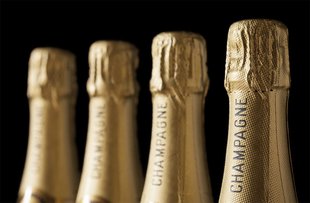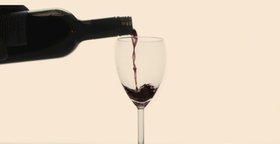Investing in Champagne in 2025: Key Benefits + Insider Tips
Over the years, Champagne has proven to be not only a luxurious bubbly to sip on, but also a great collectible with stable returns on investment.
While the supply of Champagne is limited, the demand is steadily increasing, and so are the prices — which makes it a great alternative investment. The demand for Champagne grew significantly even during some of the 21st century's biggest economic and pandemic crises.
Besides, from 2020 to 2025, the Champagne 50 Liv-ex index delivered an impressive 25% growth, significantly outperforming other fine wine indices.
Now, let’s discover why Champagne is a good investment and the factors you should consider before investing in this sparkling wine.
We’ll also look at the best Champagnes to invest in and how Vinovest can help you to start your Champagne investment journey hassle-free.
Further reading
- Explore everything about the Most Expensive Champagne Bottles in the World.
- Dive into the The World of Taittinger Champagne Brut and discover luscious wine styles, best bottles to buy, food pairing ideas, and more.
- Check out why Magnum Champagne Holds a Bigger Investment Potential than standard-sized Champagne bottles.
This Article Covers:
- 7 Reasons Why Champagne Is a Great Alternative Investment
- Champagne Market Trends to Look Out For
- 6 Key Factors to Consider Before Investing in Champagne
- 10 Best Champagnes to Add to Your Investment Portfolio
- 3 Ways to Invest in Champagne
7 Reasons Why Champagne Is A Great Alternative Investment
Besides the upbeat market trends, here are a few other factors that make Champagne an attractive investment for both beginners and seasoned wine investors:
- Price Appreciation
- Limited Supply and Growing Demand
- Stellar Auction Performance
- Stable Growth
- Aging Potential
- High Quality
- Prestigious Brands
1. Price Appreciation
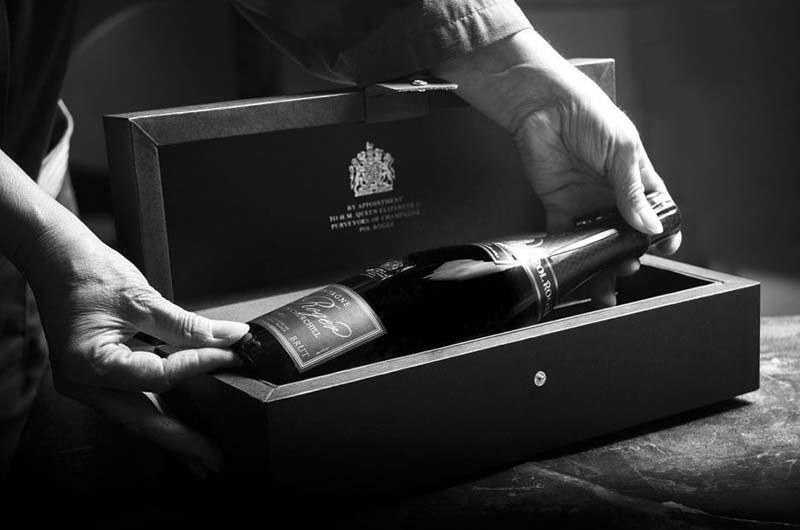
Champagne production shortages and constantly increasing demand have resulted in steady price appreciation.
For example:
- The price of the 2008 Veuve Clicquot Ponsardin La Grande Dame Brut Rose increased from $328 in June 2023 to $560 in May 2025, a jump of around 70%.
- The 2015 Louis Roederer Cristal Brut Rose Millesime appreciated 109%, from $268 in June 2024 to $561 in May 2025.
Champagne prices usually experience seasonal fluctuations, with prices rising around the fall season when people tend to stock on wine for the holidays.
Another trend we observed is that after a new vintage is released, it usually experiences a level-off period before showing signs of steady price growth.
2. Limited Supply and Growing Demand
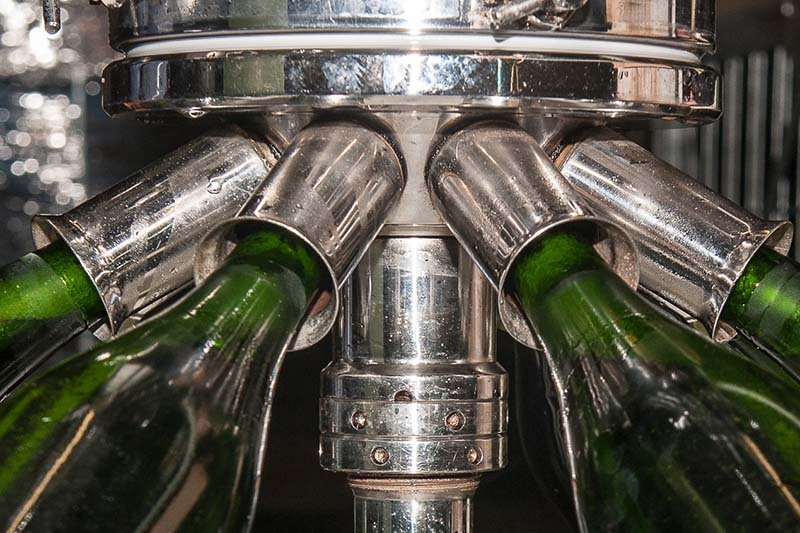
If you want to invest in Champagne, aim for vintage Champagne labels. However, they’re produced only in the best vintage years and have to be aged extensively on their lees (for at least three years.) Additionally, there are only a handful of Champagne producers.
These factors result in limited Champagne production and scarcity in the Champagne market.
On the other hand, the demand for Champagne is increasing on a global scale, as we’ve already seen. Scott Assemakis, the founder of European Fine Wines, also confirms that investors are increasingly interested in the Champagne market.
3. Stellar Auction Performance
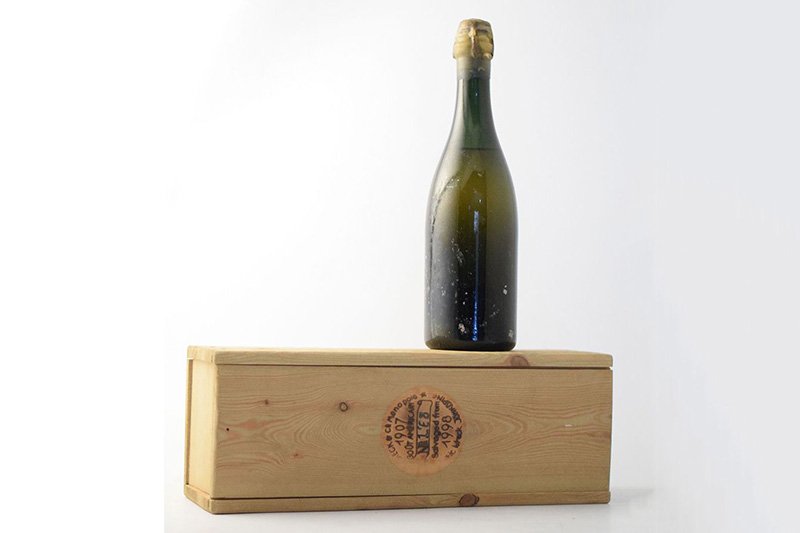
Investment-grade Champagne is a solid performer at various auction events as well. For example, older vintage bottles can easily sell at skyrocketing prices:
- 1928 Krug Brut Vintage sold for $22,670 at an Acker Merrall & Condit auction in 2009.
- 1874 Perrier-Jouët Brut Millésimé sold for $56,200 at a Christie’s auction in 2021.
4. Stable Growth
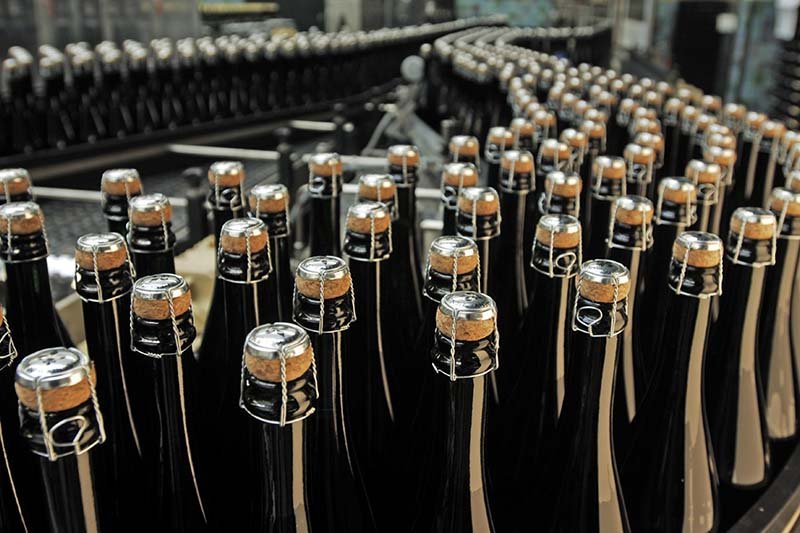
Champagne prices have seen some short-term fluctuations in line with the broader fine wine market, but the long-term outlook remains strong.
It’s generally considered a low-risk investment with steady returns over time. The Champagne 50 Liv-ex index has climbed consistently over the past decade, and some even see it as more stable than gold.
5. Aging Potential
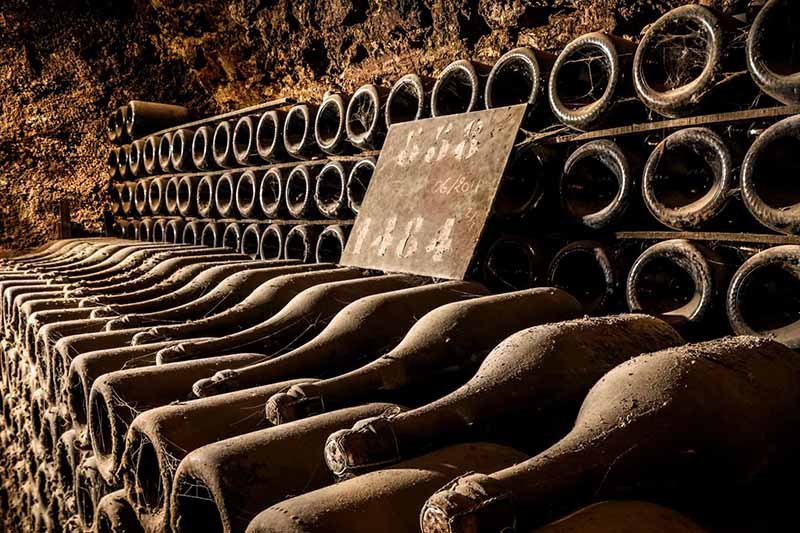
Contrary to popular misconception that Champagne has a short shelf life, most investment-grade bottles can age for several years. If you store your Champagne bottles under optimal conditions, some of the best ones can age for up to 15 to 20 years.
Note: This longevity usually applies to vintage Champagne (produced with grapes from a single harvest.) In contrast, non vintage Champagne (made with grapes from a few different years) has a shorter shelf life of about 3 to 5 years.
6. High Quality

Champagne is made exclusively in the Champagne region, following strict winemaking regulations.
This sparkling wine can be made only with the Pinot Noir, Chardonnay, and Pinot Meunier grape varieties in different proportions. In the case of investment-grade bottles, only the highest-quality grapes from the most prestigious Premier and Grand Cru vineyard sites go into the final Champagne blend.
7. Prestigious Brands
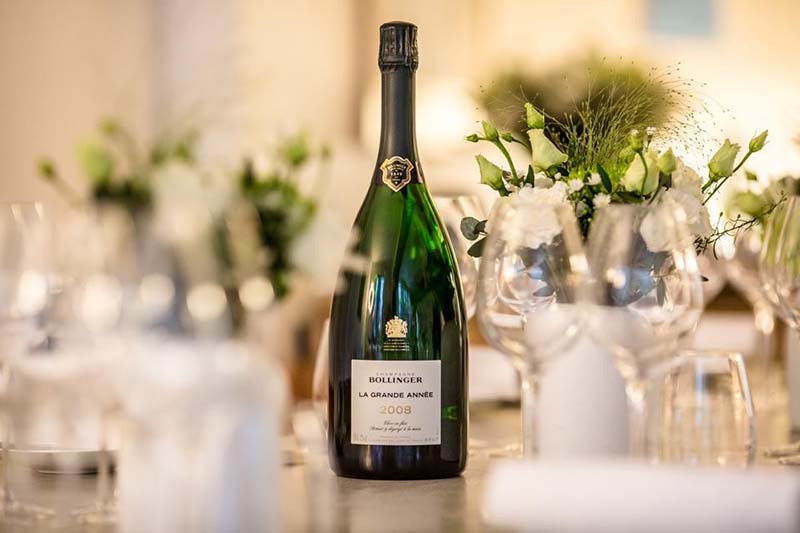
Champagne is a synonym of luxury, lavish lifestyle, and celebration. Some of the most coveted Champagne brands are endorsed by celebrities and are well-established globally, which means there’s a constant demand for this sparkling wine.
Some of the most prestigious Champagne brands include:
- Moët Hennessy Dom Perignon
- Louis Roederer Cristal
- Krug
- Salon
- Armand de Brignac
- Bollinger
- Taittinger
- Pol Roger Sir Winston Churchill
- Veuve Clicquot
Fun fact: Besides promoting the bubbly, famous celebrities also invest in Champagne companies. For example, in 2022, actor Leonardo DiCaprio invested in the eco-friendly Telmont Champagne brand, currently managed by Ludovic Du Plessis.
Champagne Market Trends to Look Out For
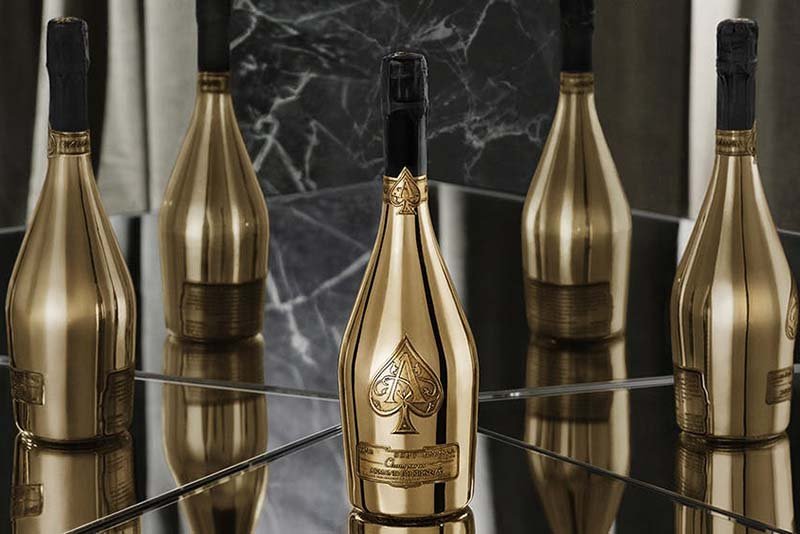
First, let’s take a look at the main trends in the Champagne investment market in 2023:
1. Expanding Market Size
Champagne exports in 2024 stood at 271 million bottles, with the overall market size standing at around $6.43 billion. According to the IMARC Group, the Champagne market is expected to reach $7.92 billion by 2033, growing at a CAGR of 2.3% between 2025 and 2033. This reflects the continued global appeal of Champagne as a premium luxury product.
2. Emergence of New Markets
The largest markets are the US and the UK, which imported approximately 27.4 million and 22.3 million bottles in 2024, respectively.
Australia is now one of the fastest-growing Champagne markets globally. According to The Drinks Business, in 2022, the country imported a record 10.5 million bottles — a 12-fold increase in volume since 2001.
Additionally, consumption and investment in Asian markets, like China and India, have risen significantly in recent years.
3. Shift From Brand Image to Vintage
Some of the most prestigious Champagne houses like Dom Perignon and Cristal rely heavily on their brand image. Their names are a synonym of premium quality, making them highly desirable in the wine investment world.
However, factors like Champagne’s vintage year, harvest, grape quality, and critics’ scores have become increasingly important for investors over the past few years.
For example, in 2021, the Dom Perignon Champagne house released its long-awaited 2012 vintage (at $2,406 per 12-bottle case), and Krug debuted its 2008 vintage (at $4,196 per 12-bottle case). Instead of promoting just their brand names, wine producers and critics make sure to promote the vintage wine instead.
6 Key Factors to Consider Before Investing in Champagne
Now, let’s see what you should look for when deciding on which Champagne to invest in:
- Invest in Exceptional Vintages
- Consider Investing in Rosé Champagne
- Invest in Cases
- Include Larger Bottles in Your Portfolio As Well
- Buy Authentic Bottles Through a Reliable Wine Merchant
- Store Your Champagne Collection Under Optimal Conditions
1. Invest in Exceptional Vintages

Invest in a specific Champagne vintage instead of a brand. Some Champagne brands are a symbol of luxury and generally come with a hefty price tag, but the goal is to invest in a bottle that will bring you a substantial return on investment.
The most remarkable Champagne vintages of the last few decades are 2014, 2013, 2012, 2008, 2000, 2002, 1995, 1996, 1997, 1998, and 1999.
Be ready to invest a substantial amount since well-performing vintages usually cost more. However, the initial excitement around them can lead to shortages later on, and that’s when holding such a vintage in your portfolio will pay off.
2. Consider Investing in Rosé Champagne
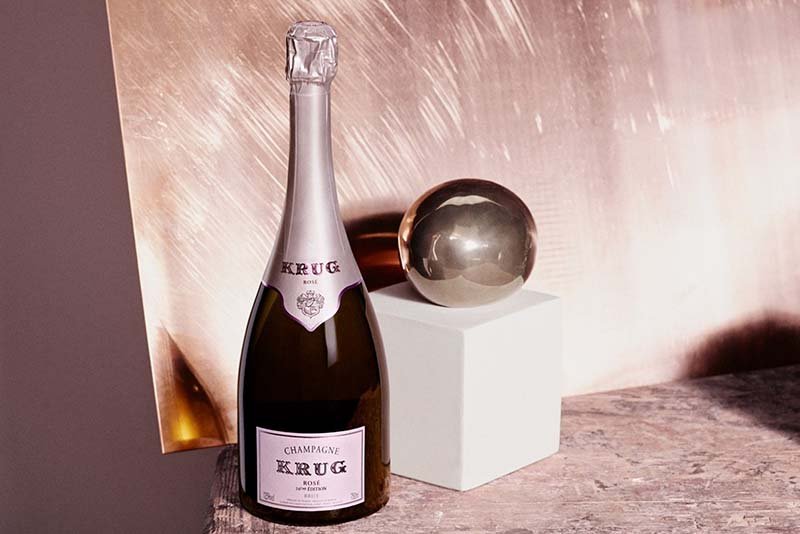
Rosé Champagne is becoming increasingly popular among wine investors. It constituted about 6% of the total Champagne market in 2024.
Additionally, pink Champagne is made exclusively from the red wine grape variety Pinot Noir, which increases the wine’s tannin levels. Thus, Rose Champagne usually has bigger aging potential, making it a great investment-grade wine.
3. Invest in Cases
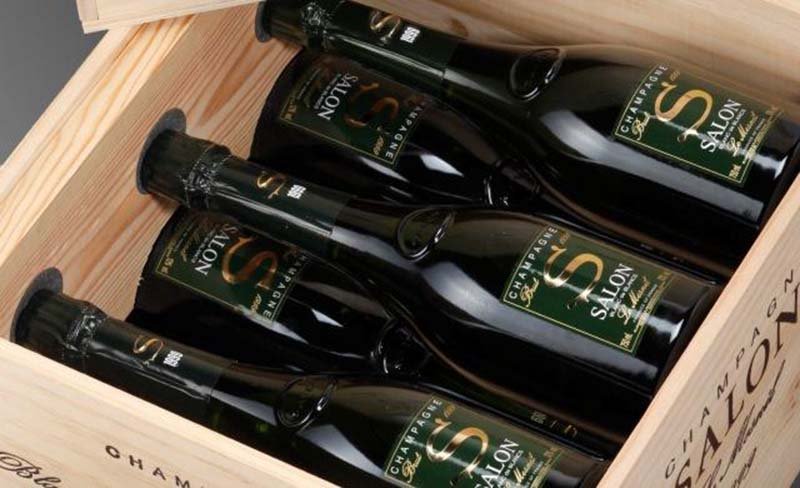
Investment wines’ value is usually calculated per case (one case contains 12 bottles.) So, buying only one standard-sized bottle might not result in an impressive return on investment. Plus, buying by the case means you can easily resell to hotels, restaurants, and bars.
4. Include Larger Bottles in Your Portfolio As Well
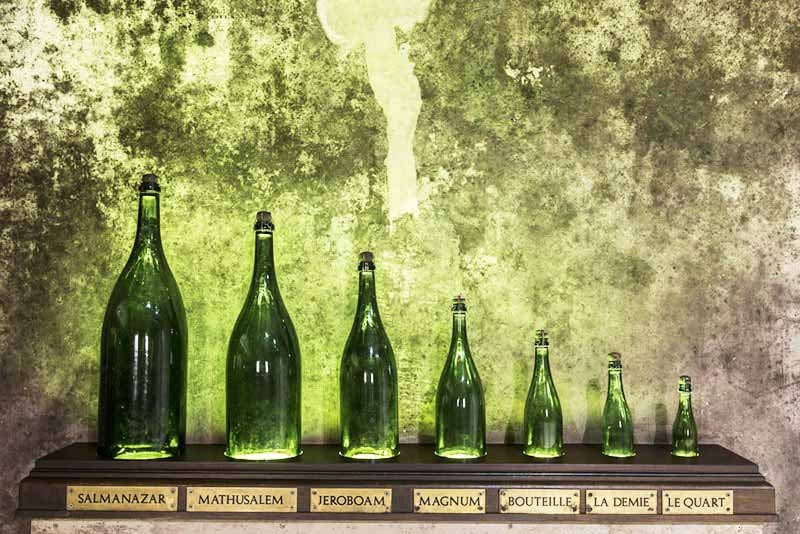
Large bottle formats such as Magnums, Jeroboams, and Imperials can turn out to be a great investment choice. While these bottles usually sell at a premium compared to standard-sized bottles, they can also fetch much higher returns on investment in the years to come.
That’s because a Champagne house would usually produce very few large format bottles, and they’re considered rare collectibles. Also, wine stored in bigger bottles tends to preserve for longer, extending its aging potential.
5. Buy Authentic Bottles Through a Reliable Wine Merchant
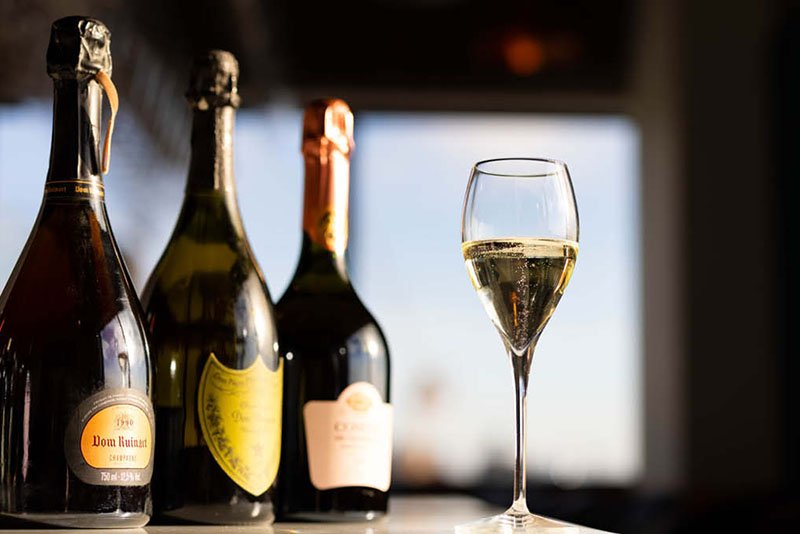
Before you start your Champagne investment journey, make sure you choose a reliable wine merchant. Do thorough research on your merchant of choice and make sure they have a good reputation and sell only high-quality, authentic wines.
The easier option would be to entrust a reliable wine investment company like Vinovest to help you build your portfolio easily.
6. Store Your Champagne Collection Under Optimal Conditions
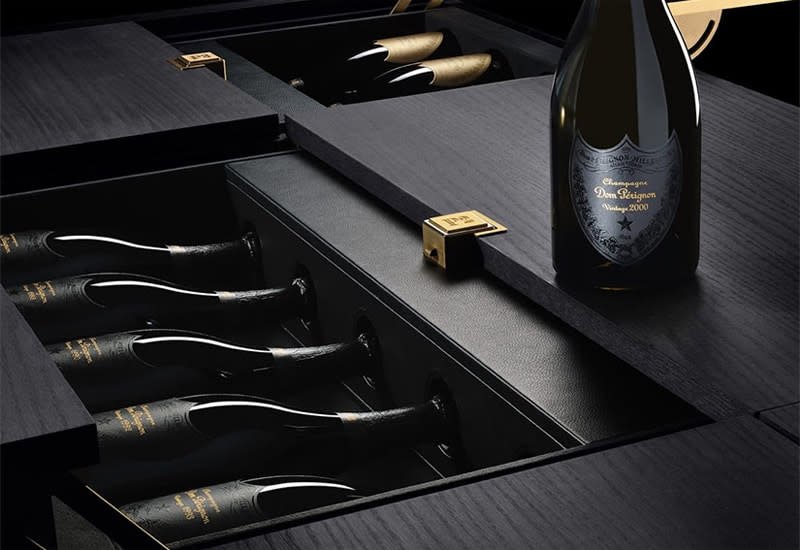
While knowing Champagne's best vintages, brands, and current market trends is vital for your portfolio’s success, it is also crucial to know how to store your wines properly.
If you don’t store your bottles correctly, you run the risk of jeopardizing your investment - the wine might age prematurely or even spoil.
So, whether you want to build your own wine cellar at home or entrust your bottles to an external wine storage facility, make sure that the storage space has optimal temperature, light, humidity, and vibration levels at all times.
Now that you know all the Champagne investment basics, let’s check out the best bottles you can add to your portfolio!
10 Best Champagnes to Add to Your Investment Portfolio
Here are 10 cult wines to invest in:
- 2002 Moët Hennessy Dom Perignon Rose ($489)
- 2008 Moët Hennessy Dom Perignon Brut ($333)
- Armand de Brignac Ace of Spades Gold Brut ($324)
- 2009 Louis Roederer Cristal Millesime Brut ($368)
- 2007 Bollinger Vieilles Vignes Francaises Blanc de Noirs ($1,681)
- 2006 Krug Brut Vintage ($427)
- 2004 Salon Cuvee 'S' Le Mesnil Blanc de Blancs Brut ($1,341)
- 2008 Pol Roger Cuvee Sir Winston Churchill Brut ($328)
- 2008 Henri Giraud 'Argonne' Ay Grand Cru Brut Rose ($1,804)
- 2008 Veuve Clicquot Ponsardin La Grande Dame Brut Rose ($730)
But then, how do you buy or invest in these coveted bottles?
3 Ways to Invest in Champagne
There are a few ways in which you can start investing in Champagne and other fine wine labels. Here are the three main methods we recommend:
1. Use a Professional Wine Investment Platform
You can use a professional wine investment platform like Vinovest. It’s an AI-based platform that helps you buy, store, and sell fine wine bottles from around the world with just a few clicks.
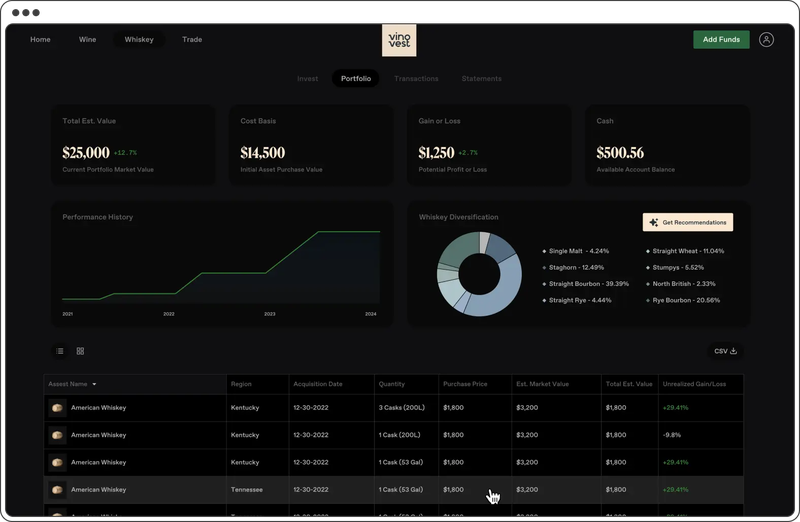
Vinovest requires only a $1,000 minimum investment, so you don’t need to have a fortune to start your fine wine investment portfolio.
The platform also makes the investment process quick and hassle-free. You just have to:
- Sign up on Vinovest.
- Answer a quick questionnaire so Vinovest can determine your investment goals.
- Fund your account.
From there, Vinovest’s Master Sommeliers will start building your portfolio with the help of advanced quantitative investment models.
Additionally, your wine collection will be safely stored at bonded warehouses that maintain optimal storage conditions at all times. And you can buy or sell bottles whenever you want or even get them delivered to your doorstep.
So, what’s the potential ROI you can get when investing through Vinovest?
Here’s a glimpse showing some recent wine exits:

2. Get Help From a Wine Investment Manager
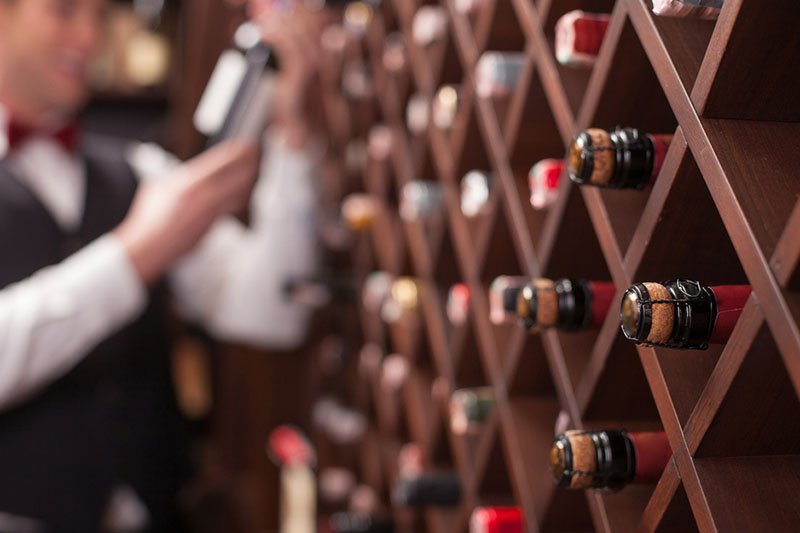
Some companies allow you to invest a certain amount of money, and in return, you get a personal fine wine investment manager who picks and buys wines for you.
If you prefer more personal service, this can be a good way to start trading on the fine wine market. However, keep in mind that the minimum investment amount would typically be anywhere between $15,000 to $50,000.
Also, do extensive research before choosing your wine portfolio manager and be 100% sure that the service you choose is reliable.
3. Buy Bottles on Your Own
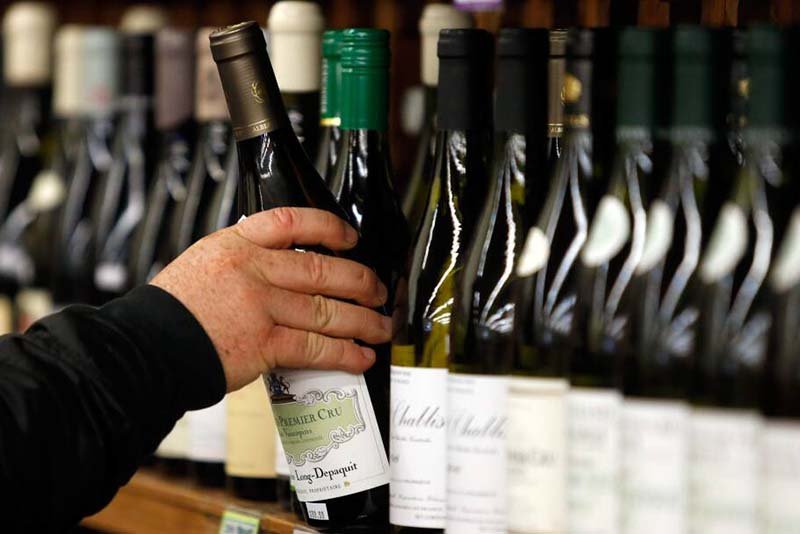
To buy wines yourself, you just need to find a few good fine wine merchants. You’ll have full control over what you buy and how much money you invest (you can start with as little as a few hundred dollars.)
However, be prepared to spend a good amount of time researching the different wine producers, labels, vintages, and fine wine market trends. Also, make sure you’re buying only authentic bottles since counterfeits are quite common.
Get Hold of The Best Champagne Collectibles Today!
Champagne is a great asset that can diversify your investment portfolio. The demand for this prestigious bubbly from the coveted Champagne region is on the rise while the supply of the most investment-worthy bottles remains limited.
The good news is that creating a successful wine collection of Champagne and other cult wines can be quick and easy, and it’s just a few clicks away with Vinovest!
So what are you waiting for? Sign up today to build a winning wine investment portfolio.
